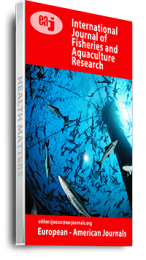The Zooplanktons community structures in three polyculture models of pods, stocking mainly grass carp (Ctenopharyngodon idellus) were enumerated. We focused on the variability of a zooplankton community structure and compared its differences in the three polyculture models. Environmental factors and zooplankton abundance differed significantly among models. Nevertheless, model 2 had the minimum biomass of crustacean and zooplankton. Statistical analysis revealed that, NO2–N, COD, NO3–N, T, DO, PO43–P and pH are the most important environmental variables acting on the zooplankton assemblage. The differences in community structure of zooplankton and the growth rate of fish in the three Polyculture models showed that the model 2 was the most reasonable and efficient culture method, and Paddlefish (Polyodon spathula) can make more valuable contributions to market demand than bighead carp (Aristichthys nobilis).
Keywords: Ctenopharyngodon Idellus, Environmental Factors, Pond Polyculture Model, Zooplankton Community Structure

